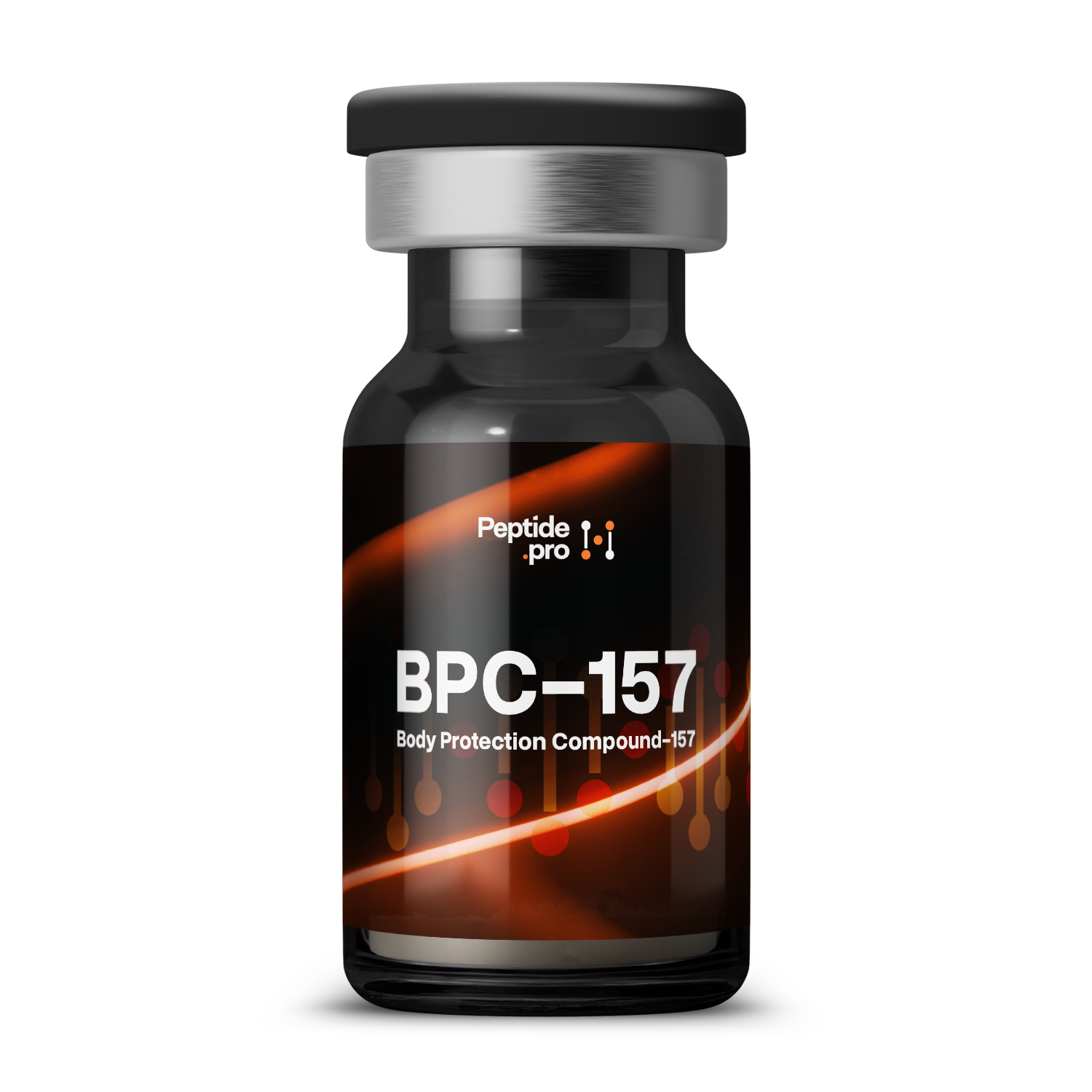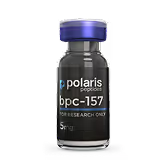BPC-157
BPC-157 is a synthetic 15–amino-acid peptide derived from a naturally occurring stomach protein, studied for its ability to speed up tissue repair. In human case reports, it has been linked to faster healing of tendon, ligament, and skin injuries and may help protect gut lining. It’s mainly used in research on wound and injury recovery.
Compound Overview
About the product
The peptide sequence is Gly-Glu-Pro-Pro-Pro-Gly-Lys-Pro-Ala-Asp-Asp-Ala-Gly-Leu-Val, representing a fragment of the body-protective compound found in stomach lining. It is synthesized by Fmoc solid-phase peptide synthesis (adding each amino acid in sequence on a resin). Purification by high-performance liquid chromatography yields research-grade material at over 95 percent purity. Final identity and purity are confirmed by mass spectrometry.
BPC-157 appears to modulate angiogenesis (formation of new blood vessels) by upregulating vascular endothelial growth factor (VEGF) signaling and enhancing nitric oxide production. It also promotes fibroblast migration and collagen synthesis, key steps in tissue repair. These actions support restoration of damaged mucosa, muscle, tendon, and skin in preclinical models. The precise molecular targets in human tissues are still under investigation.
The BPC-157 benefits have been primarily evaluated in the context of tissue repair and wound healing.peptide has been evaluated primarily for its tissue-repair and wound-healing potential. In limited human case reports, application of BPC-157 was associated with accelerated healing of tendon and ligament injuries and reduction of gastric ulcer symptoms. Users maintained normal blood chemistry throughout treatment. Controlled clinical trials are needed to confirm these findings.
Reported BPC-157 side effects in human use are minimal, with no serious adverse events documented in case reports. Mild local discomfort at the injection site has been noted anecdotally. No changes in routine blood counts or organ-function tests have been reported. Safety in pregnancy, lactation, and long-term use remains unestablished.
BPC-157 is produced by Fmoc solid-phase peptide synthesis on a resin support. After assembly, the peptide is cleaved and purified by HPLC to >95 percent purity. Mass spectrometry verifies correct sequence and molecular weight. Manufacturing follows research-grade peptide compounding standards.
BPC-157 is classified for research use only and is not approved by the U.S. FDA, EMA, or other major health authorities. It cannot be prescribed or marketed as a therapeutic. Investigators may obtain it under investigational peptide regulations that vary by region. No clinical formulations are commercially available.
Human use reports daily subcutaneous or oral BPC-157 dosage of 200–500 µg. No standardized dosing guidelines exist outside of these informal reports. Duration of use in case reports ranges from two to eight weeks. All administration should follow institutional review board–approved research protocols.
- Do use only under approved research protocols with ethical oversight.
- Do monitor basic blood panels (liver, kidney, blood count) during use.
- Don’t assume oral formulations provide consistent bioavailability.
- Don’t use during pregnancy, lactation, or active malignancy.
- Q: Is there clinical trial data for BPC-157?
- A: No controlled clinical trials have been published to date.
- Q: How safe is BPC-157 in humans?
- A: Case reports indicate minimal side effects, but systematic safety data are lacking.
- Q: Can it be taken orally?
- A: Some users report oral dosing, but absorption and efficacy remain unverified.
For research use only. Not approved for medical use.


